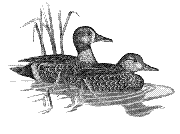US Fish & Wildlife Service
Date of this Version
January 1992
Abstract
Most waterfowl managers envision typical waterfowl habitat as the undulating or flat terrain characteristic of the prairie pothole region of the north-central United States or the aspen parklands of Canada. However, several other habitats in North America provide valuable resources for breeding and migrating waterfowl. Among these is the Rocky Mountain region of the western United States, which stretches in a band 100&#;500 miles (160&#;800 km) wide and 1,240 miles (1,984 km) long from south-central New Mexico to northern Montana (Figure).
Some Rocky Mountain wetland complexes contain waterfowl breeding densities that equal or exceed those of prairie breeding habitat, and also serve as important staging, migratory, and wintering areas. To aid waterfowl management endeavors in this region, this leaflet summarizes aspects of wetland ecology and waterfowl biology in montane habitats. Although emphasis is placed on the Rocky Mountain region, many of the wetland characteristics and waterfowl relationships in this area are similar or identical to those found in other montane regions of the United States.



Comments
Published in Diana H. Cross and Paul Vohs (eds.) Waterfowl Management Handbook. Fort Collins, CO: U.S. Fish and Wildlife Service, 1988. Online at http://www.nwrc.usgs.gov/wdb/pub/wmh/contents.html